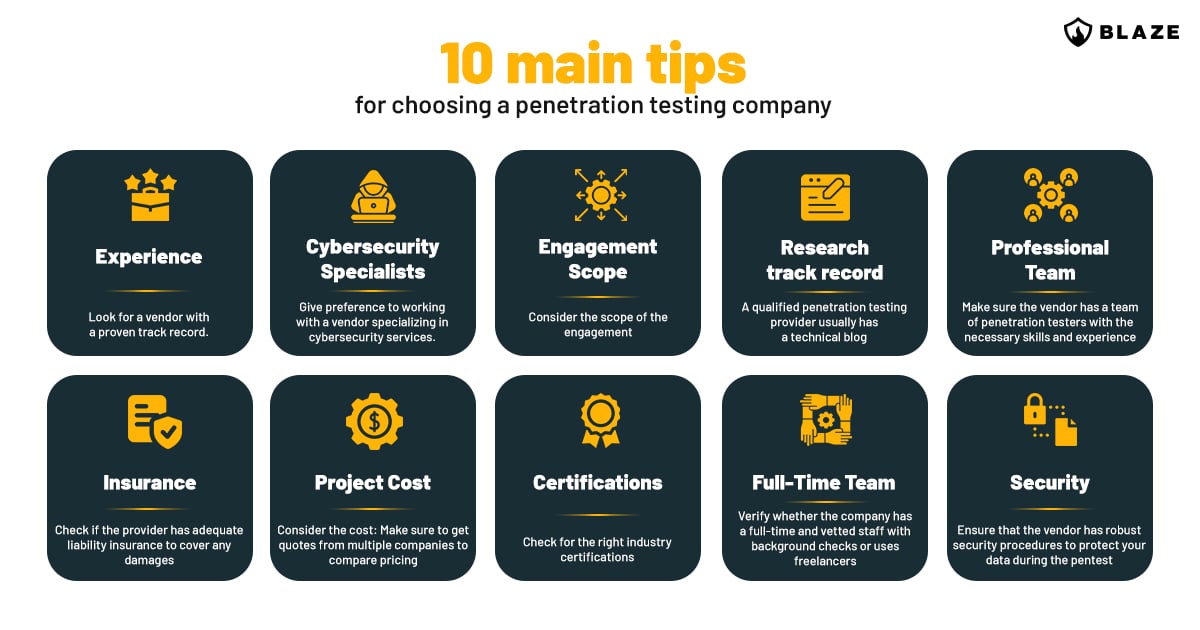According to the new Atomico report, The State of European Tech, Europe currently has more than 3,900 growth-stage tech companies and 41,000 early-stage startups – and in the next five years, at least 25,000 more tech startups are expected to be formed. The US startup scene also has reasons to be optimistic in 2024, with investments expected to grow this year.
Still, there are many challenges startups have to face, such as the growing number of cyberattacks. Recent findings, including those from Verizon’s 2023 Data Breach Investigations Report, indicate that small businesses are the target of 43% of all cyber attacks. This risk is compounded by the fact that many startups are not fully equipped to handle sophisticated cyber threats. While large corporations may have expansive resources to dedicate to cybersecurity, startups and small businesses often need to be more strategic due to resource constraints.
Given these challenges, understanding and implementing cybersecurity measures like vulnerability scanning and penetration testing is critical.
In this article, we dive into the specifics of penetration testing for startups – its benefits, types, recommended frequency, pricing, and more.
What is penetration testing for startups?
Penetration testing for startups involves conducting simulated cyber attacks to discover and address security flaws in a startup’s SaaS applications, APIs and cloud services. This practice is essential for protecting sensitive data, maintaining customer trust, and adhering to cybersecurity standards and compliance regulations.
Unlike established corporations, startups often operate with limited resources and must prioritize rapid growth and development. This unique context makes penetration testing crucial for ensuring that security does not become an afterthought in the rush to market.
In the context of startups, penetration testing serves not only as a defensive mechanism against cyber threats but also as a strategic tool to:
- Build a security-first culture: Instilling the importance of security from the outset sets a precedent for all future development and operations, emphasizing that security and innovation go hand in hand.
- Attract investment: Demonstrating a commitment to security through rigorous penetration testing can make a startup more appealing to potential investors who are reassured by proactive risk management practices.
- Accelerate market entry: By identifying and mitigating vulnerabilities early, startups can avoid delays associated with security breaches, ensuring a smoother and faster path to market.
Pentesting for startups is tailored to their specific needs, growth stage, and resource constraints, making it an essential component of a comprehensive cybersecurity strategy that supports a startup’s dynamic and innovative environment.
Vulnerability scanning vs. penetration testing: A clarification
Penetration testing often gets confused with vulnerability scanning; however, the two are very different types of security assessments. In short, vulnerability scanning aims to detect vulnerabilities, while pen testing goes a step further to actively exploit vulnerabilities in a controlled fashion.
Vulnerability scanning is an automated process using software to scan a system for known vulnerabilities. It provides a list of vulnerabilities that need to be fixed, but it does not exploit them.
Penetration testing is a more comprehensive approach where testers identify security vulnerabilities and misconfigurations and attempt to exploit them, simulating what a real-world attacker would do. It provides an in-depth analysis of the system’s weaknesses and the potential impact of an attack.
What are the benefits of penetration testing for startups?
A penetration test is recommended for startups regardless of their development stage: formation, validation, or growth phase. Some of the key benefits of regularly conducting cybersecurity assessments are related to the following:
- Regulatory compliance. Many startups operate in industries regulated by legal and compliance standards (e.g., GDPR, HIPAA, ISO 27001, PCI DSS). One of the main drivers of procuring pentesting is attaining SOC 2 compliance, especially in the past few years. Penetration testing helps ensure compliance with these regulations by demonstrating a commitment to security best practices and avoiding potential fines and legal issues.
- Protection against data breaches. By identifying and fixing vulnerabilities early, startups can significantly reduce the risk of data breaches. This is crucial for protecting sensitive information such as customer data, intellectual property, and financial records, safeguarding the startup’s assets and reputation. Protecting sensitive data is a critical concern, as startups frequently handle not just their intellectual property but also sensitive customer data.
- Customer trust and loyalty. According to Vanta research State of Start Security 2022, 57% of startups are asked by prospective clients to prove their security measures. Lack of appropriate certification, security audits or, at the minimum, a recent detailed report following a penetration testing assessment can hinder a company’s growth, especially in its early stages.
- Vendor/third party requirements. Startups often undergo penetration testing not only because partners may require a report but also to enhance trust in vendor and third-party relationships. By proving their systems’ security through thorough testing, startups demonstrate their dedication to data protection, boosting their credibility with larger corporations that have strict security standards.
- Improved security posture and resilience. Regular penetration testing helps startups develop a robust security posture by continuously identifying and addressing vulnerabilities. This ongoing process improves security and enhances the startup’s resilience against cyberattacks.
- Competitive advantage. In competitive markets, startups demonstrating a strong commitment to cybersecurity through activities like penetration testing can gain a competitive advantage. This is especially true when customers are increasingly conscious of compliance with cybersecurity standards.
What are the types of penetration tests for startups?
Penetration testing for startups and other organizations can be categorized into three main types based on the level of information provided to the testers about the target system. Each type offers a different approach and insight into the security posture of a startup, helping identify vulnerabilities from various perspectives. Understanding these types—black box, white box, and grey box testing—is crucial for startups to choose the most suitable approach for their needs.
Black Box
In black box testing, the penetration testers have no prior knowledge of the internal workings of the startup’s system. They approach the system similarly to an external hacker, with no access to source codes, network diagrams, or any detailed documentation. Black box testing is particularly valuable for startups looking to understand how an outsider might penetrate their systems. It can help identify vulnerabilities in public-facing applications, websites, and external networks. However, it might not be as thorough in identifying deeper security issues within the system due to the lack of internal information.
White Box
Here, the penetration testers are given full knowledge of the system, including access to source codes, network infrastructure, documentation, and credentials. This type of testing is beneficial for startups because it provides a deep dive into their security posture, uncovering vulnerabilities that might not be visible through external testing alone. It’s particularly useful for testing complex applications and ensuring that internal systems are secure from threats that could arise from within the organization or from sophisticated external attackers who manage to bypass the outer defenses.
Grey Box
Grey box testing offers a middle ground between black box and white box testing. Testers have partial knowledge of the system’s internal workings, which could include limited access to documentation, network diagrams, or credentials. Grey box testing is well-suited for startups as it provides a realistic perspective on security vulnerabilities that insiders or external attackers could exploit with some level of system knowledge. It’s effective for assessing both external and internal security measures and can help startups balance the depth of testing with the resources available.
Security assessment recommendations for startups at different growth stages
The choice of the right security assessment for a startup depends on several factors, including its size, growth stage, the complexity of its infrastructure, regulatory requirements, and available resources. At Blaze, we have experience pentesting hundreds of startups at different growth stages. Here are our recommendations on what types of security testing are best at a given stage and how often to perform them:
Early-stage startups in the formation or validation stage
At the formation and validation stage, startups should begin with automated vulnerability scanning. This process, which can be set up to run on a regular schedule, serves as a first line of defense, helping to identify and rectify common vulnerabilities in the system’s infrastructure and applications without significant manual effort.
Additionally, conducting an annual penetration test from either a grey box or white box perspective is recommended. Grey box testing offers a balanced perspective, providing insights into potential vulnerabilities with some level of inside knowledge, akin to an attacker possessing limited system information.
The report obtained as a result of penetration testing can be used for certifications, compliance goals, or cybersecurity attestation for customers.
Growth-stage startups
As a startup transitions from its early stages to a growth phase, the complexity of its operations, systems, the volume of data it handles, and its visibility in the market all increase. That is when, next to vulnerability scanning, companies should start performing penetration tests more frequently. A quarterly pentest or continuous penetration testing is recommended.
It is quite a common mistake for companies at this point to fail to pentest all their platforms. Neglecting to examine such systems as internal dashboards leaves them vulnerable to attacks. The most important recommendation for growing startups is to test all your major platforms.
Recommended type and frequency of security testing for startups

How to choose a penetration testing provider?
When choosing penetration testing services, knowing that only high-quality pentesting is worth doing is essential. But how do we know which providers have the technical excellence required for the job?
Google’s tips on penetration testing provider selection provide a good guideline for what to look for in your cybersecurity partner. You can also consult our comprehensive blog post on the subject and the infographic below.

A reputable pentesting firm will help you choose the right solution for your needs, whether you want to prepare for real-world attacks, achieve regulatory compliance, or get actionable advice to improve your defenses.
How should startups prepare for a first penetration test?
By carefully preparing for your first penetration test, you can maximize its effectiveness and ensure it provides valuable insights into improving your startup’s cybersecurity defenses. Here’s a guide to help you prepare effectively:
- Define the scope: Start by identifying which parts of your network, system, mobile or web applications you want to test. This could be your external network, internal network, web and mobile apps or APIs. The scope should ensure a comprehensive assessment that covers the critical aspects of your startup’s digital assets. We will discuss the specifics of scoping later on.
- Determine goals: Are you checking compliance with specific regulations, looking for general vulnerabilities, or focusing on areas where you suspect weaknesses?
- Choose the right type of pentest: Understand the tests mentioned above – black box, white box, and grey box – and decide which is most suitable for your needs. Black box tests simulate an external attack without prior knowledge of the system; white box tests provide the tester with full system information, and grey box tests are a mix of the two.
- Communicate with your team: Inform relevant team members about the test. Make sure they know what to expect and how to distinguish between the test and a real attack. Decide if you want the test to be a “blind” test where only select individuals know it’s happening or if everyone should be aware.
- Backup data: Ensure that all critical data is backed up. While penetration tests are safe, having current backups is always a good practice.
- Logistics and timing: Schedule the test at a time that minimizes disruption to your business operations.
- Have a post-test plan: Plan for how you will address the findings. This includes allocating resources for fixing vulnerabilities and possibly scheduling a retest.
How to define the scope of a first security assessment?
The first penetration test should be strategically focused on critical areas where the likelihood and impact of a breach would be highest. Here’s a recommended scope tailored for a tech startup:
Web application and API testing: Since tech startups often rely heavily on SaaS applications, web-based services, and APIs, they test for vulnerabilities like SQL injection, cross-site scripting (XSS), and insecure API endpoints are an important focus. Ensure that authentication, authorization, and data validation mechanisms are robust.
Cloud infrastructure and storage: If you’re utilizing cloud services (e.g., AWS, Azure, Google Cloud Platform), include testing your cloud configuration and storage. Check for misconfigurations, inadequate access controls, and improper data encryption.
Mobile application security (if applicable): If your startup has a mobile app, include it in the test. Focus on areas like data leakage, session handling, and integration with external services or APIs.
Network penetration testing: Conduct both external and internal network testing. Externally, focus on firewalls, edge devices, and remote access points. Internally, assess the security of wireless networks and internal data transfer mechanisms.
Endpoint security: Evaluate the security of devices that access your network (laptops, smartphones, workstations). This includes testing for vulnerabilities that could be exploited through phishing attacks or malware.
When planning your penetration test, it’s essential to partner with a provider who understands the unique challenges and nuances of your startup’s ecosystem. They can help tailor the test to your specific technology stack, operational environment, and business model.
How much should startups spend on a pentest?
The pricing of a pentest depends on several factors, such as the size of the organization, the type of assessment, scoping, specific compliance requirements, and the experience and reputation of the pentest provider. Simple web app or API tests are typically cheaper, while a thorough examination of all the company’s assets will consume much more time and resources, significantly increasing the pentest’s price.
The average cost of a professional penetration test is between $10,000 and $35,000. However, based on the project’s intricacies, pricing can start as low as $5,000 or surge beyond $50,000.
We have written a comprehensive blog post about factors influencing penetration testing pricing.
At Blaze, we offer special discounts for early-stage startups to help them secure their first steps in business. Contact us for a custom quote.
Conclusion
Despite many cautionary tales, what can be observed is that startups, especially in their early days, push cybersecurity to the side. Unfortunately, this attitude can leave organizations vulnerable to attacks. Considering growing rates of cybercrime, especially attacks such as phishing and ransomware supported by the RaaS model, not investing in strong cyber defenses can only be described as negligent.
Penetration testing and vulnerability scanning are critical aspects of a robust cybersecurity strategy, especially for startups and small businesses that might not have the extensive resources of larger organizations. Given the limited resources and the potentially devastating impact of a breach on smaller enterprises, understanding and effectively employing different types of security testing can be a key differentiator in a startup’s survival and success.








